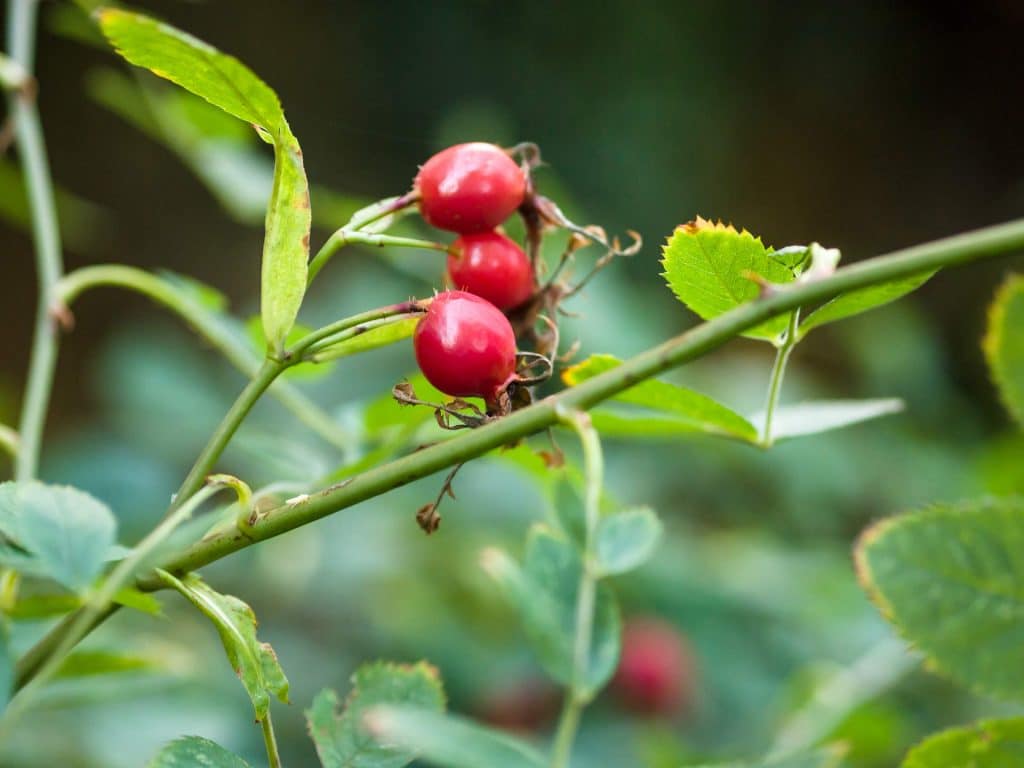As the world war progressed well into the 1940’s, importing food became increasingly difficult. Many strategies were used to try and address this, from reforming the Women’s Land Army to rationing food supplies and launching the Dig for Victory campaign.
Nevertheless, a lack of important vitamins was clearly having a negative impact on the health of British people, particularly in towns and cities with less space for allotment and garden growing.
Having already published a number of ‘Hedgerow Harvest’ leaflets on the benefits of foraging, in 1941 The Ministry of Food announced a campaign to increase the supply of rosehip syrup to the nation. In conjunction with commercial support they planned to process the hips into the Vitamin C rich syrup, which would then be made available in chemists and shops for an affordable market price.
Timed to coincide with the ripening of cultivated and wild hips in the autumn, the government organised a national week of picking. Schools, women’s institutes and both the Guides and Scouts movements became involved, collecting around 200 tons of rose hips – then converted into approximately 6000, 000 bottles of syrup. The women and children involved were paid threepence for every pound collected.
Following the success of this campaign and in line with their plan to educate the population on how they could feed themselves, The Ministry of Food added several rose hip recipes to their fifth Hedgerow Harvest leaflet, from classic rosehip syrup to an unusual rosehip marmalade. The 1943 recipe advised mincing 2 pounds of rose hips before boiling with 3 pints of water, straining carefully (the seeds are covered in tiny hairs that are an extreme irritant) before boiling the liquid down to 1 ½ pints and mixing with 1 ¼ pounds of sugar. Stored in small colourised bottles in a cool, dark place the syrup could last through the winter. This was a huge amount of sugar for a family experiencing rationing, but the health benefits were clear.
A modern recipe for rosehip syrup.
As prolonged boiling can destroy Vitamin C, the trick to making a truly useful rosehip syrup is in the timing. Most of us now have the benefit of domestic freezers and refrigeration, the syrup can be frozen as ice cubes or in small containers, defrosted as and when required.
Collect as many rose hips as you can. Wash well and blitz in a food processor or roughly chop with a knife. For every 300g of hips collected add 500ml of cold water, bring to the boil and gently simmer for around 20 minutes.
Line a colander with a large, doubled over piece of muslin. Sit the colander over a bowl or jug. (A clean cotton tea towel will also work if you can’t get hold of muslin.) Strain the hips, catching the juice in the bowl. Leave to sit for around an hour so that all of the juice passes through. Do not be tempted to squeeze the cloth, this will make your syrup cloudy and risk you squeezing through some of the irritating hairs found on the seeds.
Pour the strained juice back into a clean pan. For every 500ml of juice add 325g of sugar. Warm through just enough to dissolve the sugar. Bottle while warm, or leave to cool and then freeze.
